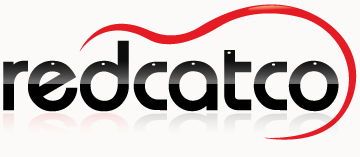The Power of Crowds – We Will Gather
One area that Social Media has revolutionised more than any other is crowdsourcing. It was one of the communication shifts that prompted the foundation of Redcatco, and was the topic of my talk at the first Social Media in Business event in the UK. At the time the focus was on sourcing information and ideas; much has changed since then.
Crowd Sourcing
Crowds – large collections of unrelated people – can be highly effective at providing information to aid decision making. Although, in his book “The Wisdom of Crowds: Why the Many Are Smarter Than the Few”, James Surowiecki makes the point that crowds are wise only as long has they have diversity, independence and are decentralized, otherwise crowds can become very foolish.
There have been some great examples of crowd sourcing data, one of my favourites being UK Snow, crowd sourcing weather information, how very British! As Clay Shirky observes, the problem now is not technical capability, it is legitimacy. Under what circumstances do you take the advice from user generated media and when do you ignore it?
From Talk to Action
All talk and no action obviously isn’t a recipe for change, the insights gained have to be put into practice to make a difference, but Social Media is closing that loop too. Back in 2010, Orange launched a “mobile volunteering” program, creating apps to turn people’s spare moments into useful actions. Again, many people doing something small to achieve something big isn’t by any means a new idea, but social platforms have drastically altered the mechanics and economics of self-organising groups. After the 2011 Summer Riots in London, something dramatic happened.
“Hundreds of people armed with brooms, binbags and rubber gloves turned out across London to help clean up the damage caused by a third night of rioting, looting and arson. Co-ordinated online on Facebook and Twitter, volunteers mobilised in the worst-hit parts of the capital to sweep streets, help local shopkeepers and show solidarity with communities thrown into turmoil by the violence…” The Guardian, 9th August 2011.
Social Platforms have demonstrated their ability to connect groups of volunteers with specific needs time and time again, and it is something that echoes through the history of The Internet (see Tom Watson‘s inspirational book, Cause Wired).
There is a difficult balance between use-case-specific platforms and general purpose social platforms. It is a challenge I come across many times in the design of social intranets: too use-case specific, and the platform doesn’t achieve critical mass, too generic, and needs fail to connect with resources efficiently. The same is true in the world of the public Internet: While platforms like Facebook and Twitter have millions of users, it is hard for specific causes to connect them, or vice versa. Specific applications are required to create a focus, and a mechanism, for the two to connect.
We Will Gather
The team at We Will Gather are bridging that gap with a hyperlocal approach. Inspired by the #riotcleanup hashtag, it’s an elegantly executed application built around Twitter. Created by Dan Thompson, it connects volunteers with projects in their specific area. At their launch last week, Lloyd Davis and Sophie Collard talked through how it works, and gave some examples of current projects. Like all good tools, it’s radically simple and surprisingly powerful:
- From Twitter: Tweet with the word ‘help’, the hashtag #wewillgather and a postcode.
- The website starts a page for your action, and Tweets you a link to it.
- Add any extra details you’d like.

